Toad Care Sheet
Developed with and approved by a qualified veterinarian.
This care sheet covers a variety of toad species, including:
- African bouncing toads
- Egyptian toads
- Moroccan green toads
- Southern toads
- Yellow belly toads
- Reticulated toads
- Lemon toads
- Bumblebee toads
- Malayan forest toads
Overview
- Toads are amphibians, not reptiles. In addition to toads, amphibians include frogs, salamanders and newts
- Toads come from a variety of different geographies; they are found from Africa to Europe to all over the United States
- Their size and appearance vary by species
- They are inquisitive pets who love to explore their habitats
- Toads recognize routine; feed them at the same time and you’ll find them waiting to eat
- Toads generally do not like being handled; they are pets to look at and watch rather than hold
- Like other amphibians, toads have skin glands that secrete irritating toxins to deter predators; when handling them, wear latex gloves, not only to prevent irritation from these toxins but also to prevent transfer of skin oils and bacteria from your hands to frogs’ porous, absorptive skin
- Are generally nocturnal (active at night)
- Recognize routine; should be fed at the same time every day
- Many love to burrow under substrate during daytime
- Are generally prolific breeders, laying hundreds of eggs at a time; be prepared if you house males and females together
- While both reptiles and amphibians shed their skin periodically, amphibians tend to shed more often and commonly eat their shed skin to hide their presence
- Different species of toads are noted for specific behaviors:
- The African toad (also called the Egyptian toad or African bouncing toad) bounces up and down when threatened by predators to confuse or escape from them
- Bumblebee toads, named for their bright yellow and black spotted skin, do not hop like other toads but amble along the ground
- Many species of toads communicate through a range of specific calls that can sound like chirps, snores, wheezes or even bleating sheep; some species are silent
Characteristics
Care Difficulty Intermediate Average Life Span Up to 10+ years with proper care, depending on species Average Adult Size 1-6 inches, depending on species Diet Insectivore Minimum Habitat Size 10- to 20-gallon tank for two to six adult toads, depending on species Habitat size
Provide appropriate size and shape habitat to accommodate normal behavior and exercise. Depending on the species, toads are generally social and do well when housed together if there is adequate space. A 10- to 20-gallon tank or terrarium can house two to six toads, depending on the species. Terrarium habitats must have a securely fitting screened top to help prevent escape while allowing adequate ventilation.
Building your habitat
For terrarium, provide a shallow bowl with filtered, chlorine-free water for toads to submerge in. They absorb water through their skin and tend to defecate in water, too, so water should be refreshed daily. Moisten substrate on one side of habitat by misting, so one side is moist (not wet) and the other is dry, allowing the toad to choose.
- Substrate – Coconut fiber, dampened sphagnum moss, leaf litter and cypress mulch are recommended; avoid gravel or small bark chips that toads may ingest and develop gastrointestinal obstruction from and artificial turf that is too rough for their delicate skin
- Décor – Add pieces of bark, logs, leaf litter, plants or commercial décor for hiding places.
- Humidity – Humidity requirements vary by species; most toads do well at a humidity of 50 to 60%. Pet parents often mistakenly maintain toad habitats at high humidity levels of 70% or higher; this high humidity can kill many toads. Monitor humidity with a humidity gauge. Decrease humidity with increased ventilation; increase humidity by misting habitat with water
- Temperature – Temperature range in the low to high 70s°F is appropriate for most species. Nighttime temperature can fall slightly lower. Heat can be provided with an under-tank heating pad and a thermostat. The pad should cover no more than half of the bottom of the tank so that there is a cool zone and a warm zone. Each zone should have a hide box. Temperature should be monitored with two thermometers. Ceramic heat emitters should not be used with toads, as they will dry them out and dehydrate them
- Lighting – Fluorescent lighting 10 to 12 hours a day is required to provide daylight. It should be turned off at night. Low-level UVB lighting is recommended even for nocturnal frogs, but provide hiding spots to hide from light, as needed
Cleaning your habitat
If using a bowl of water buried in the substrate in a semiaquatic terrarium, remove the bowl, scrub it with a reptile-safe habitat cleaner or 3% bleach solution, rinse it thoroughly, then replace the water (dechlorinated and at the appropriate temperature) daily before returning it to the habitat.
Thoroughly clean the remainder of the habitat at least once a month:
- Place toad in a secure habitat
- Scrub the tank and furnishings with a reptile-safe habitat cleaner or 3% bleach solution
- Rinse thoroughly with hot water so no residue remains. It is imperative that all traces of the habitat cleaner or bleach solution are gone
- Dry the tank and furnishings completely and add clean substrate before putting toads back in the habitat
Feeding
A well-balanced toad diet consists of:
- A variety of insects, including gut-loaded (recently fed) crickets, roaches, mealworms, earthworms, superworms, calci-worms, hornworms and waxworms
- Small toads (under 1 inch in size) should only be offered small insects such as fruit flies and pin-headed crickets
- Adults should be offered three to six insects at each feeding
Things to remember when feeding your toad:
- Toads are insectivores and are generally not fussy eaters
- Fresh, clean, filtered, chlorine-free water should be available at all times
- Feed juveniles daily, adults every other day
- Sprinkle food with calcium supplement daily and a multivitamin supplement once or twice a week
Care
- Will reach adult size in six to 18 months, depending on the species and under ideal conditions; upgrade habitat size as your amphibian grows
- Don’t handle toads unless necessary. Always wear latex gloves when handling your toad; bacteria or oil on your skin can be absorbed through toads’ delicate, porous skin and harm them; plus, all amphibians have small glands in their skin that secrete irritating toxins to scare off predators. Do not allow toads’ secretions to contact your eyes, mouth or open wounds. Use an appropriately sized, small-mesh, soft net to move or block the toad while doing habitat maintenance
Toads are available for purchase at your local Petco Pet Care Center location. Please call ahead to check availability.
Supplies
-
sized habitat
- Thermostat –tank heaterand fixture
- Multivitamin supplement
- Cricket food
- Cricket quencher
- Thermometers
- Humidity gauge
- Mister
- Most toad species can be housed together with their same species in small groups in an adequate-sized habitat. Check with your veterinarian before housing toads together
- Males and females housed together may breed
- Do not house different amphibian species together
Health
Signs of a healthy toad
- Active and alert
- Clear eyes, nose and mouth
- Skin free of hanging shed skin, sores, wounds or discoloration
- Clear vent
- Plump, rounded body
- Eats and passes stool regularly
- Hopping and swimming
- Hunts prey actively
Red flags (If you notice any of these signs, contact your veterinarian.)
- Weight loss or decreased appetite
- Lethargy
- Bloated abdomen or other body parts
- Skin lesions or discoloration
- Distressed breathing
- Weak movements
- Sunken eyes
- Dull reactions
- Excess hanging shed skin
- Discharge or bubbles from eyes, nose or mouth
Common health issues
| Health Issue | Symptoms or Causes | Suggested Action |
|---|---|---|
| Health Issue Chemical intoxication | Symptoms or Causes Caused by exposure to soap, detergent, pesticides, oils on human skin, etc. | Suggested Action Consult your veterinarian and protect your amphibian from exposure. |
| Health Issue Intestinal obstruction | Symptoms or Causes Lethargy, decreased appetite, bloating caused by swallowing gravel or other indigestible substrate or by eating too many hard-shelled insects. | Suggested Action Consult your veterinarian; surgery may be required. |
| Health Issue Nutritional deficiencies | Symptoms or Causes Weak hind legs, lethargy, change in skin color. | Suggested Action Consult your veterinarian and ensure a varied diet; use vitamin and mineral supplements. |
| Health Issue Skin problems | Symptoms or Causes Lesions, sores and discoloration of skin caused by bacterial, fungal or parasitic infections. | Suggested Action Consult your veterinarian. |
- What do toads eat? Toads eat insects such as mealworms, crickets, roaches, waxworms, calci-worms, hornworms, superworms and earthworms.
- What do baby toads eat? Baby toads eat small insects like wingless fruit flies and pinheaded crickets.
- Do toads need a heat lamp? Toads need supplemental heat and generally do better with under-tank heating pads that don’t dry them out as much as radiant heat.
- Are toads easy pets? Toads are generally easy pets to care for if they are kept at the right temperature and humidity in addition to being fed a nutritionally balanced diet.
- Are toads poisonous to humans? Toads have glands in their skin that secrete irritating toxins to ward off predators.
- What is the difference between frogs and toads? Frogs have webbed toes; toads do not. Frogs live in water; toads live mostly on dry land. Frogs lay eggs in clusters, while toads lay eggs in chains. Frogs move by hopping, while most toads move by crawling. Frogs have smooth, moist skin; toads have dry, bumpy skin. Frogs are usually slender-bodied, while toads tend to be stout-bodied. Frogs have long legs for jumping, while toads have short legs and don’t jump well.
- What do wild toads eat? Most toads in nature eat a variety of insects; some eat reptiles, small mammals and even other amphibians.
Additional care sheets
Ask a Pet Care Center associate about Petco’s selection of products available for the care and happiness of your new pet. All products carry a 100% money-back guarantee.
Because all toads are potential carriers of infectious diseases, such as salmonella bacteria, always wash your hands before and after handling your toad and/or habitat contents to help prevent the potential spread of diseases.
Pregnant women, children under the age of 5, senior citizens and people with weakened immune systems should contact their physicians before purchasing and/or caring for a toad and should consider having a pet other than a toad.
Go to the Centers for Disease Control at cdc.gov/healthypets for more information about Toads and disease.
The information on this Care Sheet is not a substitute for veterinary care. If you need additional information, please contact your veterinarian as appropriate.
What Do Toads Eat?
As a child, I knew that toads are insectivores, and as an adult with the same passion for these amphibians, I learned that they can actually be ferocious carnivores. Carnivores are animals whose food and energy requirements derive from animal tissue or meat.
Toads are obligate carnivores meaning that they cannot survive without meat in their diet. Adult toads eat insects, small mammals, small amphibians, small fish, and small birds. Toads are omnivores as tadpoles and transform into carnivores as adults.
Let’s have a deeper look at what meat toads eat and how they choose their prey depending on their lifecycle stage with a particular focus on adult toads eating habits. Toads are frogs so they eat similar things. Feel free to check out the video below to get a quick overview of what toads like to eat.
Toad Diet Depending on Lifecycle Stage
| Toad Life Cycle Stage | Diet | What They Eat |
| Tadpole | Omnivore | Algee, Plants, Phytoplankton |
| Toadlet & Smaller Toads | Carnivore | Bugs, Fish, Toads |
| Large Adult Toad | Carnivore | Mammals, Birds, Lizards |
Tadpoles are omnivores, feeding primarily on plants (algae) but also on small phytoplankton and other tadpoles. However, once they become toadlets and adult toads, the vast majority of toads are only carnivores.
Learn more about the full frog (and toad) life cycle in the video below:
What Toad Eggs Eat
At the stage of eggs, toad eggs feed on the yoke from their egg. They cannot move and have no mouths so they rely on their own storage of naturally-formed yoke to survive.
What Toad Tadpoles Eat
Tadpoles primarily eat algae, plants, small insects, and phytoplankton. They are omnivores that may also eat smaller tadpoles if their location lacks other nutrients for them to feed on.
In captivity, you can feed tadpoles rinsed or boiled lettuce, spinach, or broccoli. However, once they pass the stage of being tadpoles, toads are no longer omnivores and should be fed live meat-based prey.
What Baby Toads Eat
Baby Toads, or Toadlets are carnivores and eat small bugs, small fish, and smaller toads. They may eat crickets, flys, mosquitos, fruit flies, guppies, minnows, small moths, small snails, small worms, tadpoles, and other toadlets.
It can take toadlets 6 to 9 weeks to become adults, and depending on the species they could start to eat much larger prey once they get bigger. You can also learn more about the different stages of the frog life cycle here. Now let’s focus on what adult toads eat.
What Adult Toads Eat
Adult toads eat invertebrates, small mammals, small lizards, small freshwater shrimp or fish, and smaller toads. These include beetles, cockroaches, dragonflies, grubs, larvae, minnows, moths, roaches, slugs, small birds, small toads, small bats, small snakes, and smaller toads.
Toads are carnivores that typically only feed on live or moving prey. If it is large enough for the toad to see and small enough to fit into its mouth, the toad will probably eat it.
Toads Eat Bugs
Carnivores eat meat, which consists of muscle. Insects have muscles to jump, crawl, climb and move. Therefore, insects are considered meat and they make up the main part of a toad’s diet.
Toads eat a wide variety of bugs including ants, bees, beetles, cockroaches, crickets, dragonflies, earthworms, earwigs, flies, grasshoppers, grubs, larvae, mosquitoes, moths, roaches, slugs, snails, termites, and worms.
Toads will eat any bugs that are live and fit into their mouth. It is common for small toads to feed on bugs because of their small bodies. Toads will eat larger prey as they grow.
Toads Eat Small Mammals
Large toads like Cane Toads eat small mammals including rats, mice and bats. If the prey is moving and smaller than the toad, it will wrap the mammal up into its tongue and swallow it whole, live.
Toads use their eyes to push it down into their stomachs. If the toad has teeth, they may bite, swallow and use their teeth to keep the prey back.
Toads Eat Small Amphibians
Toads eat smaller amphibians including salamanders, caecilians, as well as other toads and toads. All toads are cannibals, but larger toads were found to eat a greater proportion of other toads.
Toads are cannibals meaning they will eat other toads from different or the same species.
“Large invasive frogs that live in forests with high anuran diversity are most likely to have a higher proportion of anurans in their diet.”
Findings of a 2015 study led by G. John Measey
Toads will also eat tadpoles, even their own tadpoles that they laid in the pond themselves! And this cannibalistic nature comes into play very early in the lives of toads, as tadpoles may also eat other tadpoles if the environment does not contain enough plant-based food for them to feed on.
Toads Eat Small Reptiles
Toads eat smaller snakes, turtles, crocodiles, alligators, geckos, and lizards. Although most reptiles are predators to toads, if the predator is live and smaller than the toad, it will gladly eat the reptile.
This may come as a surprise but large toads like Cane Toads will eat some of their biggest predators if they are smaller than them in size.
I must admit, I was surprised when I learned this. Cane Toads are ferocious predators that hunt at night and can eat baby alligators in Florida for example. They like to sit, wait, and lunge at anything that moves past them and is big enough to fit into its mouth.
Toads Eat Small Fish
Toads enjoy eating small fish including brine shrimp, goldfish, guppies and minnows. Therefore, do not keep toads in a tank with other aquatic animals that are smaller than them since there is a chance the toad will eat them.
It is a bad idea to keep your pet toad in an aquarium with other small fish because your toad will gladly eat your other pets. Toads do not eat fish eggs since they like to eat live and moving prey and fish eggs are immobile, but they can eat fish offspring once they hatch.
Toads Eat Small Aves
Large toads may eat smaller birds of any species that get too close to them. These include common birds such as bluejays, robins, woodpeckers, bluebirds, finches, sparrows, and chickadees.
Generally, if the prey is moving, is large enough for the toad to see, but small enough to fit into its mouth, the toad will try to eat it (CTNF).
List of What Toads Eat
Toads eat invertebrates, small mammals, small reptiles, small amphibians, small freshwater shrimp or fish, and smaller toads. Examples of these include:
Smaller toad species such as Oak Toads tend to eat smaller prey. For example, they eat certain ants which helps them produce their natural poison. Cane Toads are large and commonly eat bigger prey such as large spiders and small mice.
Toads may also eat their own skin. This is very common for amphibians and is a process called “sloughing.” Toads naturally shed and eat their skin which contains nutrients and protein. They do so to stay healthy and their tracks from predators.
How Do Toads Eat?
Toads eat by quickly launching their long, sticky tongue at their prey to catch it off guard and snatch it up. Toad prey gets roped up in the toad’s tongue and sticks to their saliva. Toads then retract their eyes into their sockets to swallow their live food.
Toads can be lazy or active hunters, but overall they are big eaters. Some toads are ambush predators. They hunt by sitting and waiting for their prey to come to them. Other toads are active hunters and will hunt down their prey.
Find out everything there is to know about how toads eat in our complete guide on our blog.
More About What Toads Eat
Be sure to feed your toad a varied diet if you have a frog in captivity and be kind and gentle while observing frogs eating in the wild.
Learn more about what frogs eat and how in these guides on our blog:
Common Questions About What Toads Eat
What Human Food Can Toads Eat? Toads are carnivores that eat live, moving food. Humans generally do not eat live, moving food and so toads cannot eat human food. Do not feed a toad fruits, vegetables, or table scraps.
Can a Toad Eat a Mouse? Large toads such as Cane Toads can eat small mammals including mice and other rodents, small bats, small birds, small snakes, salamanders, and small alligators.
Do Toads Eat Lettuce? Toads do not eat lettuce. Toads are carnivores that eat live, moving food. Therefore, human food including lettuce is not adapted to toads. Tadpoles however, may enjoy lettuce or spinach, but prefer algee.
How do Toads Drink? Toads “drink” water by absorbing the humidity around them through their skin. This is one of the main reasons why it is so important that toads live in a humid environment.
Can Toads Choke? If a toad ate prey that is too large for its body, it may choke or experience intestinal issues. Toads eat their own skin which may look like choking to humans. But sloughing is a natural process that toads carry out regularly, often in the morning.
Do Toads Eat Dead Bugs? Most toads will starve before they eat anything not moving like a dead insect or dead mammals. Toads are carnivores that prefer to eat live, moving food.
Do Toads Eat Everything? As a general rule, toads will eat anything that is moving, is large enough to see, but small enough to fit into its mouth. So toads may attempt to eat everything that moves and is smaller than them.
How do Toads Hunt? As a general rule, depending on the species, toads hunt two different ways: passively or actively. Toads can ambush predators and employ a passive “sit-and-wait” technique where they wait for food to come to them. Other toads actively hunt, chase, and eat their prey.
What do Toads Eat? Toads eat invertebrates, small mammals, small lizards, small freshwater shrimp or fish, and smaller toads. As a general rule, if the prey is moving, is large enough for the toad to see, but small enough to fit into its mouth, the toad will eat it.
Sources
Nutrient Requirements: Carnivores. Duane E. Ullrey. Encyclopedia of Animal Science.
Mammals: carnivores. Duane E. Ullrey. Encyclopedia of Animal Science.
Measey GJ, Vimercati G, de Villiers FA, Mokhatla MM, Davies SJ, Edwards S, Altwegg R. 2015. Frog eat frog: exploring variables influencing anurophagy. PeerJ 3:e1204 https://doi.org/10.7717/peerj.1204
Frugivory and Seed Dispersal by Hyla truncata, a Neotropical Treefrog, August 1989Copeia 1989(3):781–783. DOI:10.2307/1445517 Project: Amphibians and reptiles of Brazil.
Altig, Ronald. Whiles, Matt R., Taylor, Cindy L.: What do tadpoles really eat? Assessing the trophic status of an understudied and imperiled group of consumers in freshwater habitats, Freshwater Biology (2007) 52, 386–395.
Chesne, Corinne. La Grenouille. Artémis éd., 2009.
Parsons, Harry. L’univers Des Grenouilles: Amphibiens Poseurs. Éditions Du Trécarré, 2000.
Grenouilles, Crapauds Et Rainettes: Morphologie, Comportement, Alimentation Et Reproduction …, by S. Caratozzolo, De Vecchi, 2008.
Disclaimer: Toadsnfrogs.com is a participant in the Amazon Services LLC Associates Program, an affiliate advertising program designed to provide a means for sites to earn advertising fees by advertising and linking to Amazon.com. Toadsnfrogs.com is compensated for referring traffic and business to these companies. This site does not constitute legal, medical, or veterinary advice. Learn more in our Terms.
What do Baby Toads Eat in the Wild and as Pets?
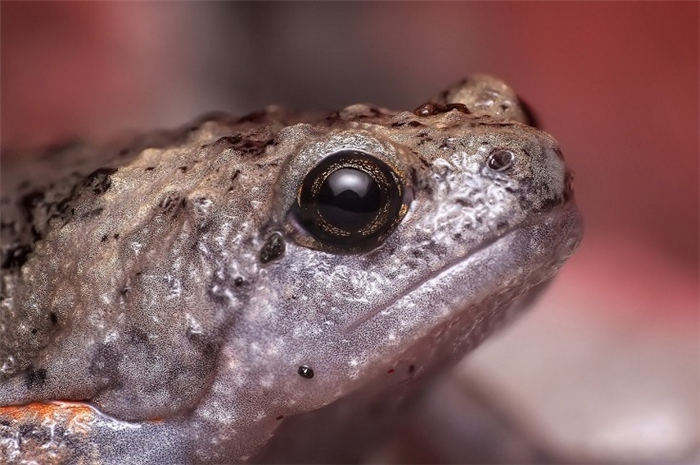
For years, many people mistakenly believed that touching a toad would cause you to grow warts! We know that’s not true, but toads have never received the same love that frogs get. Have you ever heard of a princess kissing a toad? Didn’t think so. Still, their popularity is growing, and people are starting to keep these carnivorous amphibians as pets.
If you’re planning to get a baby toad, you’ll need to figure out how and what to feed it. There are some differences in a baby toad’s diet if they’re in captivity versus the wild. But there are also some notable similarities. Starting at tadpoles, we’re going to discuss the main foods that toads will eat in the wild and in captivity, so you can be sure to feed your toad the proper diet.
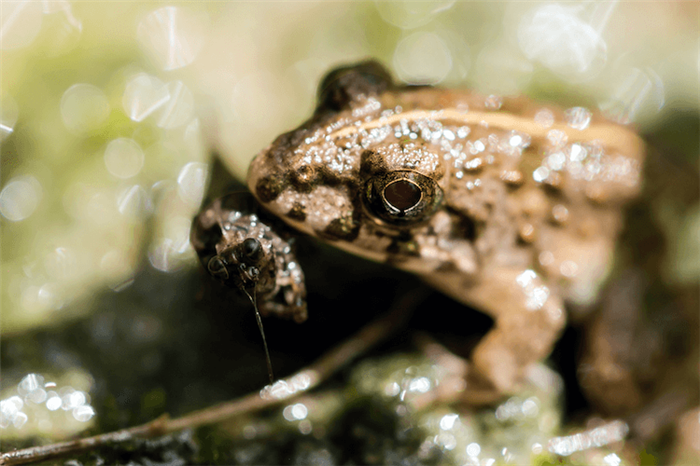
What do Tadpoles Eat?
Toads are hatched from eggs, but they don’t come out with legs. Rather, they’re born as tadpoles. They don’t even have air-breathing lungs yet, so they’re stuck in the water until they mature.
When a tadpole is first born, it will eat the remaining yolk in its egg. After that, the little tadpole will rely mostly on plant matter to sustain itself. This means eating algae and little floating plant particles. However, if there’s not enough plant matter for the tadpole, it might turn to cannibalism. While this is uncommon, it’s far from unheard of.
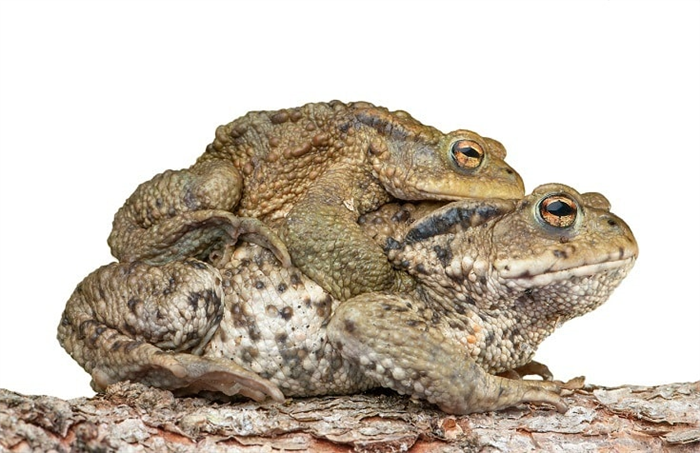
Image Credit: Alexas_Fotos, Pixabay
What do Baby Toads Eat in the Wild?
In the wild, a toad is going to eat a diverse array of food. They have varied diets and are open to eating pretty much anything that comes along that will fit in their mouth. Remember, toads are carnivorous, so they strictly eat living creatures. For baby toads, those creatures are very small.
Any type of crawling insect or bug is a great meal for a toad in the wild. They’ll munch on small crickets and grasshoppers, which will increase in size as the toad does. Even small mice are fair game for a toad, though they tend to eat these more once they reach maturity.
Worms of all kinds are delicacies. Mealworms and earthworms are common cuisine for these four-legged amphibians. As the toad gets larger, bigger meals also become available. Snails, slugs, and locusts will all be eaten if they stray too near to a large enough toad. Centipedes and flies aren’t safe either.
What do Baby Toad Pets Eat?
For toads in captivity, nutrition looks pretty similar to that of wild toads. However, there are some foods that pet toads are unlikely to eat. For example, centipedes and locusts might be common meals for a wild toad, but you’ll have a hard time purchasing feeder centipedes from the local pet store!
You never want to feed a pet toad something that you caught in the wild. Though these insects are on their meal list, wild-caught specimens are liable to have bacteria, diseases, and more that can negatively affect your toad’s health. Even if it’s a food your toad eats all the time, such as crickets, you’ll want to stick to store-bought crickets and never feed your pet toad crickets that you caught.
You might notice that some of the insects on this list are different from what wild toads eat. A lot of that comes down to what’s available. Since you have to get sterile insects that haven’t been out in the world, only insects that are grown as feeders are appropriate.
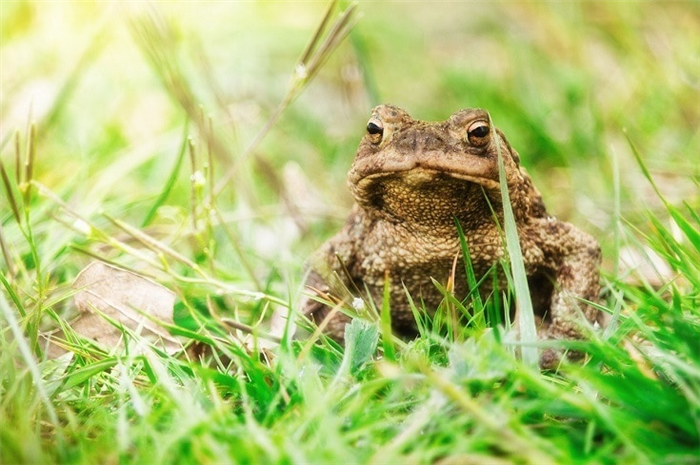
Image Credit: pixel2013, Pixabay
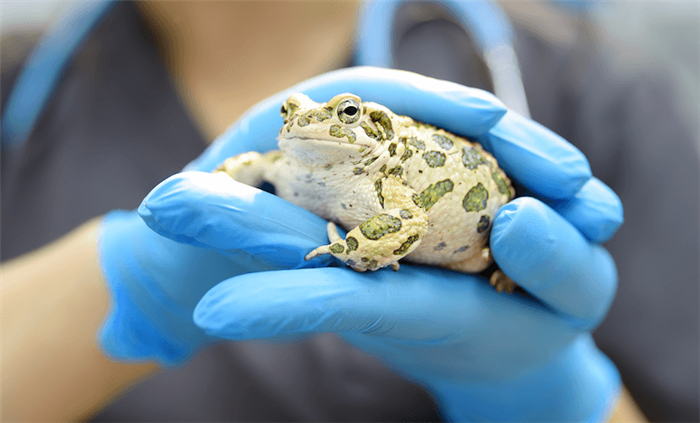
How to Feed Your Pet Toad
You have to be aware that juvenile toads eat their food whole. If you provide prey that’s too large, they’re likely to choke. Ensure that the insects you choose are no larger than the width of your toad’s head.
Gut Loading
Also, make sure to gut feed the insects you’re going to provide for your toad. Gut feeding is the process of loading the insects up with nutrients by allowing them to feed on fruits and vegetables before giving them to your toad. This ensures that your toad is getting as diverse of a nutrient intake as possible.
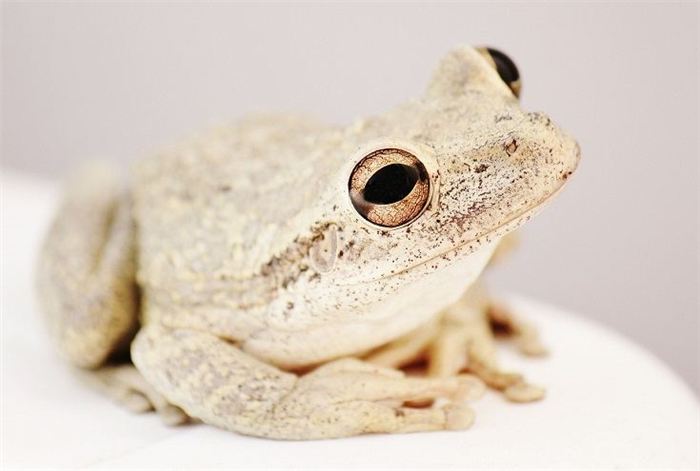
Image Credit: CassidyMarshall, Pixabay
Buy from Reputable Sources
Though you want to make sure to purchase all of your feeder insects from reputable sources, you will have plenty of choices to pick from. And you should feed as many of these to your toad as possible. It’s a good idea to feed them different foods each day. For instance, you might feed your toad earthworms on Monday, crickets on Tuesday, Aphids on Wednesday, and so on.
Establish a Routine
Another good habit is feeding your toad at the same time every evening. Keep in mind that toads are nocturnal, so feeding shouldn’t be done during the day. Captive toads do best on a feeding schedule since they recognize routine. Your toad will be healthiest if you feed it at the same time each night; around nine o’clock.
One more good rule of thumb is to only feed your toad for 15 minutes. Put the insects into your toad’s cage and let it go to town. But after 15 minutes, remove anything that hasn’t been eaten. This prevents overfeeding and ensures that dead insects don’t rot in your toad’s environment.
- Related Read:What Do Tadpoles Eat in the Wild and as Pets?
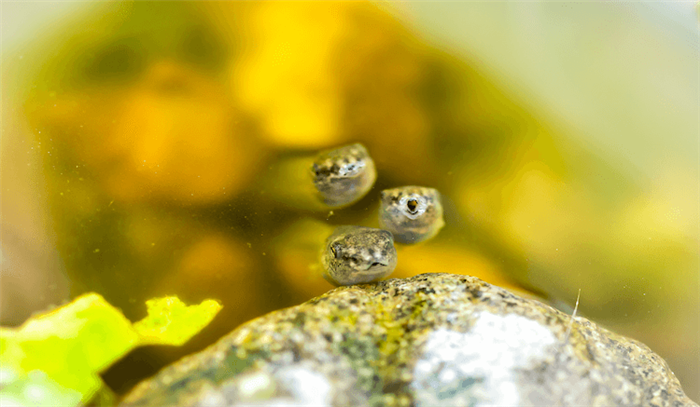
Things to Never Feed a Toad
While toads certainly need a diverse and varied diet, there are plenty of things that you should never feed a toad; wild or domestic. These foods can cause serious problems for any toad. Take salt or seasoning as an example. They can cause a toad to dry up and dehydrate, which could spell death.
You’ll also see that feeding meat to your toad is a terrible idea, even though toads are carnivorous. These animals only eat live meals though. They aren’t scavengers. You should take care to only feed your toad living insects, though you can also feed rodents when they’re large enough.
Make sure to never feed your toad any leftover human food. While this might be ok for dogs, it’s a terrible choice for toads and can lead to disastrous consequences.
What Do Baby Toads Eat? Tips For Raising A Toad
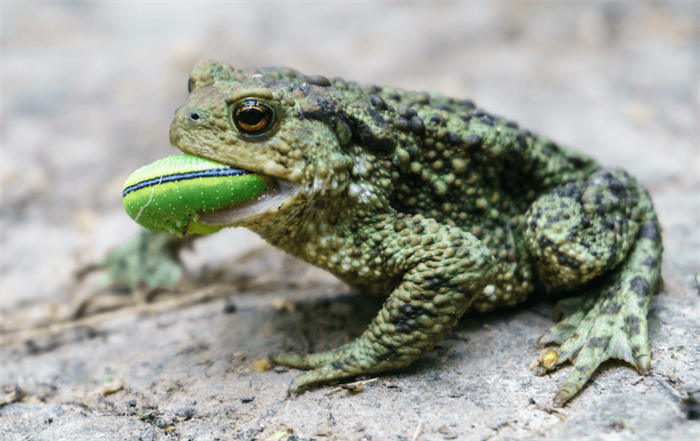
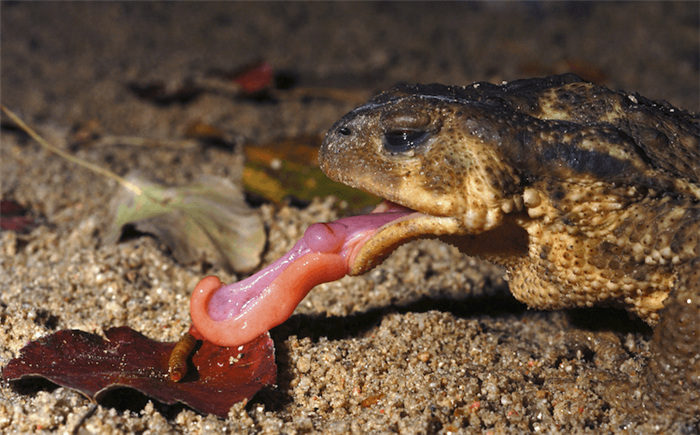
Show all photos 1
Published on Nov 01, 2021
Get inspiration for education!
Subscribe for virtual tools, STEM-inspired play, creative tips and more
Baby toads look like they would be hard to feed, but it is quite the contrary!
If you already have a few frogs or toads in your garden and want to pet them, the first thing that must be understood is the animal’s diet. Even if you want to raise a baby toad or two that you would like to raise in captivity, these tips and tricks will be very helpful.
Toads and frogs are often not adopted as pets because of their slimy skins and slightly weird appearance. However, if you are one of the many that actually like toads and want to raise a baby at home, understanding what you should let your new pet eat would be important.
Frogs and toads are actually pretty easy to have as pets, mainly because of how simple their diets are. Toads eat whatever fits their mouth and tastes marginally nice. Additionally, baby toads and adult ones have roughly the same diet, however, the portion sizes do differ. Read ahead to know about toads and what they should be eating under your watch!
If you enjoy reading this article, why not also check out what do pigs like and what do iguanas eat here at Kidadl!
What do baby toads eat in the wild?
Toads and frogs are not the most common pets to have. However, there are many of us who would love to have these amphibians who would love to have these adorable animals as a part of our families. If you are fortunate enough to already have a baby toad and are wondering what the toad will eat, you’ll be glad to know that these amphibians are not picky eaters at all.
It is actually pretty easy to feed toads and frogs since they do not require much supervision. Unlike in the case of other pets who would want you to prepare their meals in a certain way, toads actually like to eat their meals whole. Insects and worms should always be given to these toads whole and live because that would be the closest imitation of the animal’s natural habitat that we can afford at home without having to live in an actual grassland.
If you happen to have caught a few tadpoles at the pond and want to raise them, it would be great if they had access to some mosquito larvae and algae. Since tadpoles are at a stage in life when they go through rapid growth and development, they need nutrition to maintain their health and support the transformation into a baby toad and eventually an adult one. In their natural habitat, tadpoles usually first feed on whatever remains of the yolk in the egg that they hatch out of. Once the yolk has been eaten, baby toads have a diet that mainly consists of aquatic vegetation such as algae. At this stage in life, they do not feed on other species of insects and worms since they do not have the digestive tracts to process such food. Mosquito larvae that may be available to them in the pond also add nutrition to the toad’s diet and help it in becoming a rather beautiful and healthy juvenile. Feeding tadpoles at home can become a rather difficult task because finding algae can get tough. In such cases, tadpoles even go so far as eating their siblings! However, such behavior is not common and is only seen in places of habitat where food is too scarce and the tadpoles have to take major steps in order to ensure their own lives and well-being.
On the other hand, if you have adopted a baby toad and want to feed it, make sure that you enrich the animal’s diet with lots of calcium-rich foods in order to make sure that your pet grows up to have strong bones. Calcium absorption is rather essential for both baby and adult toads. Hence, your pet may go through a phase of insufficient calcium absorption if the animal is not exposed to enough amounts of sunlight. The UVB factor in sunlight allows the absorption of calcium, among other essential nutrients. Hence, make sure to arrange a basking time for your pet a few times a week while also feeding it the right amounts of food at the right time. The most important factor to keep in mind while feeding a baby toad or even an adult toad is that while these amphibians are not picky about their food and will eat just about anything that flutters and moves around them, they do not chew their food. Understandably, it can become hazardous if you buy food from pet stores that are too large to fit through the food pipe of a toad. It can lead to choking and may buy you and your pet a visit to the veterinarian. Choking is a major hazard in such small animals as toads and frogs, and if the issue is not dealt with at the earliest by a licensed veterinarian, the issue may aggravate and become fatal for your dearest pet. Hence, caution is advised while feeding animals that are so different from human beings!
Suitable Food For Baby Toads
Toads will eat anything starting from plant matter such as algae and small prey in the form of insects and flies. Baby toads eat such flies and insects in any garden that they are commonly found in. On the other hand, tadpoles eat plant matter and mosquito larvae instead of prey such as flies and insects. Hence, having a few tadpoles in a nearby pond can mean that these tiny beings will be munching on the larvae and the mosquito populace will accordingly reduce substantially.
Baby toads are carnivorous, and hence, it would not be a wise idea to be feeding them fruits and vegetables. Fruit flies and pinhead crickets, on the other hand, would make excellent food for juvenile toads and provide them with all the required nutrition. If you have been in the search of natural solutions to the trouble-causing crickets, slugs, snails, and mealworms in your garden, having a few juvenile toads or even adult ones will make sure that you are not ‘bugged’ by the ‘bugs’ every day!
Although, while having a few of these amphibians as pets in the garden can be beneficial, make sure that your garden is free from any mice. Small mice eat toads and especially juvenile ones. Hence, to ensure that your pet’s life does not come to an abrupt and tragic end, keep the mice rodent-free.
At the same time, even a toad eats some rodents if it can fit them in its mouth. You want to feed your pet toad some rodents as live prey, make sure that the animal is not larger than the mouth of the amphibian to avoid a choking hazard. This is because a frog would swallow its prey whole and would not try to chew whatever it is fed. Understandably, a large rodent, if tried to swallow whole, would tend to block the food pipe.
What Not To Feed Baby Toads
There are certain things that should never be given to adult toads, and such foods would include human foods. This is because both wild toads and pet toads lack the digestive tracts that would digest the vitamins and other nutrients that humans consume. Human food is usually cooked and heat kills a lot of the nutrients that your toads eat and require.
Fruits and vegetables are often grown with pesticides. A toad eating such chemicals in the wild or in a domestic setting would be very harmful to the diet and wellbeing. A pet toad would swallow anything that gets caught in this mouth, and hence, it becomes the responsibility of their owners to make sure that they are fed the right foods and in the right amounts.
Toads eat live prey and tend to search for the same when kept in captivity as well. For the same reason, not only will bread and other dairy products be detrimental to a toad’s diet, but depending on the species of toad that you have as a pet, it could also be fatal. Bread and dairy products are not available in the wild and hence, a toad’s digestive tract cannot be expected to be built in a way to process such alien store-bought things.
Although frogs and toads search for mealworms and crickets in the wild, they are not used to other types of meat. Any luncheon meat that you have at home may be harmful to your toad’s health. Stale food is not fit for eating either and should be kept away from all species of toads.
How To Feed A Baby Toad
A baby toad can feed on lots of mealworms, crickets, and fruit. These foods tend to have almost all the vitamins and minerals that your pet frog would need in order to be able to grow into a strong adult frog. Feeding worms and crickets from the garden is a great idea too, however, if there is no prey in your garden for your frogs to feed on, you could always buy some from a nearby pet store.
Additionally, it is worthy to note that the worms and pinhead crickets that are available at pet stores often lack the nutritional values that insects of the wild have. This problem can be solved through gut loading. Gut loading is the process of feeding the insects ample nutrients before letting a frog or toad eat them. In this way, even a toad brought up in captivity can have a diet similar to the one that it would have from eating worms and crickets in its wild habitat.
One of the most important things to keep in mind is that a pet toad will eat almost anything that fits into its mouth. If the crickets or other insects that you feed your wild frogs are too big, it can turn into a choking hazard for the animal!
Here at Kidadl, we have carefully created lots of interesting family-friendly facts for everyone to enjoy! If you liked our suggestions for what do baby toads eat, then why not take a look at what do insects eat or spadefoot toad facts?
Written By
The Kidadl Team is made up of people from different walks of life, from different families and backgrounds, each with unique experiences and nuggets of wisdom to share with you. From lino cutting to surfing to children’s mental health, their hobbies and interests range far and wide. They are passionate about turning your everyday moments into memories and bringing you inspiring ideas to have fun with your family.
Read The Disclaimer
Disclaimer
At Kidadl we pride ourselves on offering families original ideas to make the most of time spent together at home or out and about, wherever you are in the world. We strive to recommend the very best things that are suggested by our community and are things we would do ourselves – our aim is to be the trusted friend to parents.
We try our very best, but cannot guarantee perfection. We will always aim to give you accurate information at the date of publication – however, information does change, so it’s important you do your own research, double-check and make the decision that is right for your family.
Kidadl provides inspiration to entertain and educate your children. We recognise that not all activities and ideas are appropriate and suitable for all children and families or in all circumstances. Our recommended activities are based on age but these are a guide. We recommend that these ideas are used as inspiration, that ideas are undertaken with appropriate adult supervision, and that each adult uses their own discretion and knowledge of their children to consider the safety and suitability.
Kidadl cannot accept liability for the execution of these ideas, and parental supervision is advised at all times, as safety is paramount. Anyone using the information provided by Kidadl does so at their own risk and we can not accept liability if things go wrong.
Sponsorship & Advertising Policy
Kidadl is independent and to make our service free to you the reader we are supported by advertising.
We hope you love our recommendations for products and services! What we suggest is selected independently by the Kidadl team. If you purchase using the buy now button we may earn a small commission. This does not influence our choices. Please note: prices are correct and items are available at the time the article was published.
Kidadl has a number of affiliate partners that we work with including Amazon. Please note that Kidadl is a participant in the Amazon Services LLC Associates Program, an affiliate advertising program designed to provide a means for sites to earn advertising fees by advertising and linking to amazon.
We also link to other websites, but are not responsible for their content.
Summary
Toads are voracious carnivores. Their ambush hunting style and sticky tongue makes them a good predator of most insects. However, they are not insectivores like Leopard Geckos and also eat small vertebrates.
Both in the wild and as pets the majority of a toad’s diet should be made up of insects. Some of their favorite insects includes beetles, worms and crickets.
To keep your toad healthy and active a variety of insects should be fed. You can also include roaches and mealworms in their diet.
Adults should be fed two to three meals a week. Baby and juvenile individuals should be fed daily.
Feeding a toad in their tank, with the right diet, will encourage natural feeding habits and keep them healthy and enriched.
About Nigel Robert
Nigel is a lifelong reptile lover and has kept pet lizards since childhood. His first was a pet Leo which was shortly followed by a Beardie named, Rocky. For the last 10 years he has kept over 20 different species but his favorite is his Banana Ball Python, Monty.
